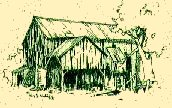In the 1870's a man named Pleasant Wimberley had moved to Cude's Mill with his family from Blanco County. Wimberley later was given the nickname "Old Man Pleas" because he was well liked and considered a friendly and generous man. He started the town's first non-profit organization and he contributed to the building of schools and churches. In 1874 Wimberley bought the mill from John Cude and his wife for only $8000 in gold. With that, he also obtained the Winters-Cude house and 200 acres of land. Displaying the importance of the mill to the town, the settlement was renamed Wimberley's Mill. Later in the 1880's the name evolved into Wimberleyville. Later the post office shortened the name by dropping the "ville" eventually resulting in what is today known as Wimberley.
Economy According to the 2000 census, it is recorded that Wimberley and most of the other small Hill Country towns around it are made up of 94.52 % white, .18% black, 6.93% Hispanic and the rest are made up of scarce amounts of natives, Asians and Pacific Islanders. The population is made up mostly from either retired citizens who moved there as a means of living each day as a "vacation" or people who have lived there since they were young, dating back to the first generations there. This town is definitely on the top list for tourism in small towns. They receive most of their business on the popular "market days". This small town business firm is nearly almost made up of boutiques, art stores, craft galleries and restaurants. Wimberley isn't very advanced in modern technology, of course they have electricity, vehicles, television and radio, but they aren't advanced by means of hospitals, fire stations, and small business. Although they do have small medical clinics with doctors on stand by, and volunteer fire fighters, they still lack major components that would make them a small city, rather than a small town.
Stories The Wimberley Corral was first built in the late 1940's, by the Avey Brothers. It's main purpose was as a meeting place for the community, where often they would talk about where they were going to build churches and other buildings. Later it was useful for being an outdoor theatre and still is one today. You can normally find the theatre playing up-to-date motion pictures between Memorial Day until Labor Day
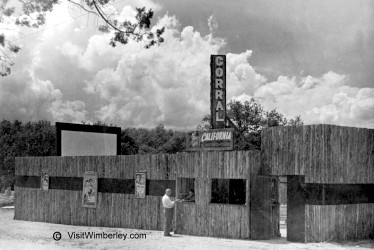
Landmarks
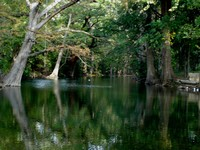
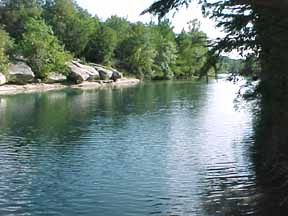
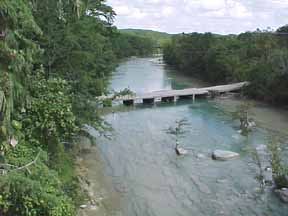
(left) This is a picture of Cypress Creek. This view is from across the street at the city hall.(middle) This is a picture of the Blanco River. The river serves as a great spot to go fishing and also swimming.(right) This is an elevated view of the Blanco River and also the old Blanco Bridge
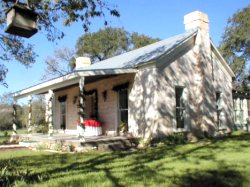
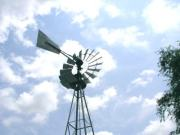
(left) This is a picture of Winters-Wimberley house after being remodeled and refurnished.(right) Is a windmill that supposedly still operates, but this at one time was the windmill that supplied water to both natives of Wimberley and Blanco.
Events CLICK HEREfor Wimberley Events
Interviews Interview was conducted by Robert S. Pratt
Interviewee was Debra Maheney
Interview Session is Temporarily Down. Sorry for the inconvenience.
City Overlook

1. Old Baldy - Concrete steps on the west side lead to a fabulous view.
2. Market Day Site - location of the monthly shopping extravaganza.
3. Village Library - research local history.
4. Chamber of Commerce Visitor Center - get up-to-date information.
5. Wimberley Mill Site - the driving force that started Wimberley.
6. The Square - art and specialty shops.
7. Olde Town Plaza - more are and craftsman shops.
8. Wimberley Cemetery - a rich legacy of Wimberley history.
If you are interested in hiking and enjoying mother nature than "Old Baldy" would be perfect for you to take on. As you can see it is located in the top left corner of the map above. Although I wasn't able to find out why they call the trail Old Baldy it is a popular tourist attraction where tourists can see a great view of Cypress Creek.
Market days are really popular in this region of the Hill Country. Market days begin on the first Saturday of April and occur every first Saturday of each month until December. During these market days, tourists from all over Texas come to buy all sorts of things from shops along the street. What is usually found in these shops are a lot of artwork done by local artist. Also, you can still find almost anything from unique clothes to car parts.
It's not really a big tourist attraction but if you are into Wimberley history you can check out the local library to find information like Wimberley inhabitants and information on the mill and its purpose.
The Chamber of Commerce is a good place to start if you are trying to find something to do. This place will provide all the popular tourist attractions and also information on lodging and places to eat.
The Wimberley Mill site is where everything started. Although this place was founded many years ago before William C. Winters and Pleasant Wimberley, this is the main economic structure that started what is now Wimberley.
The Olde Towne Plaza and the Square are both sites that are popular for the market days, but their main significance is the period of time these buildings have been around. These buildings have been around since the 1800's.
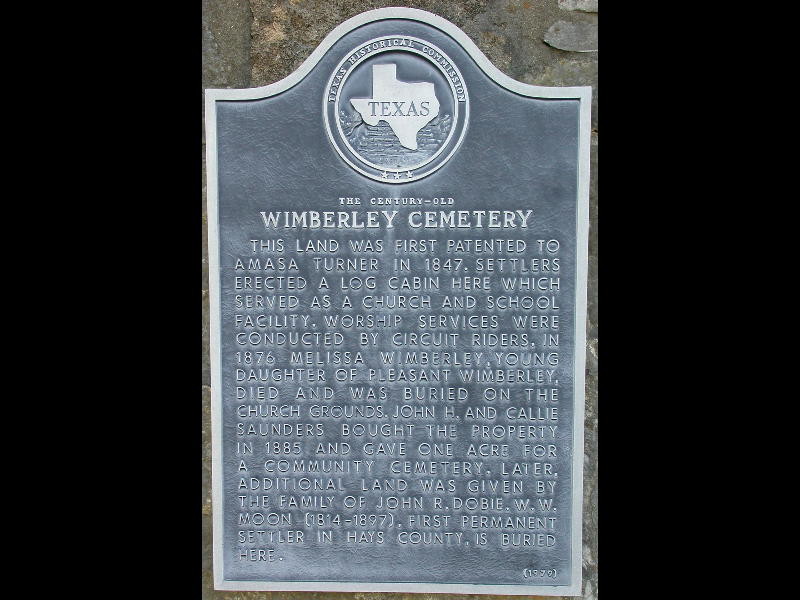
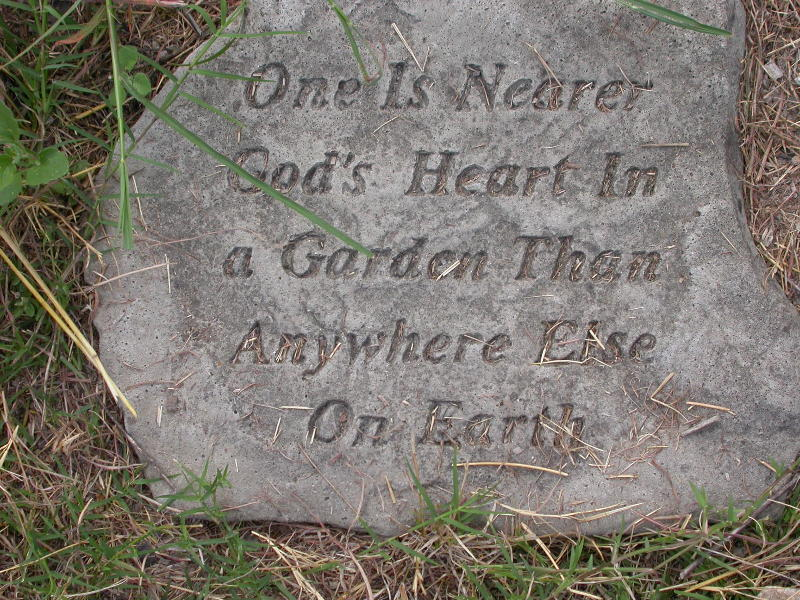
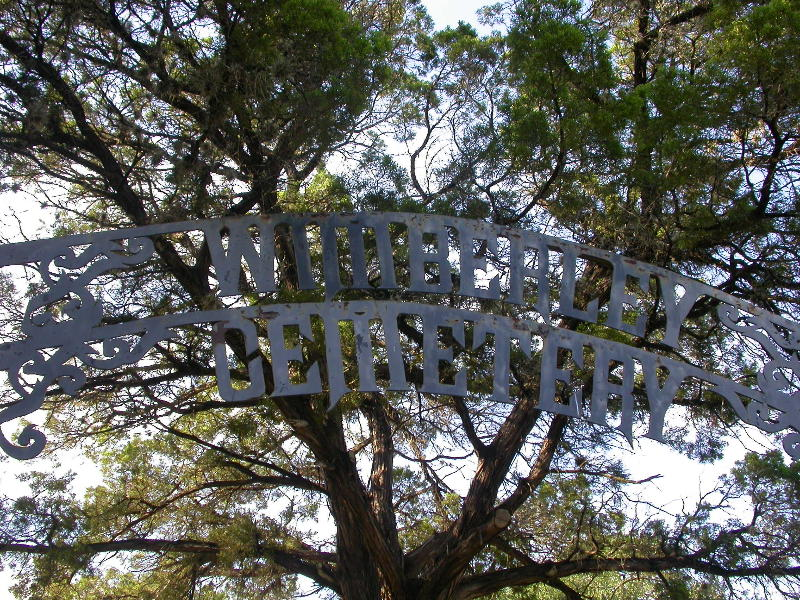 Then last is the Wimberley Cemetery. The Wimberley Cemetery is home of many of the earlier settlers including William C. Winters and even Mr. Wimberley himself. This Cemetery is located at the intersection of FM 3237 and Old Kyle Rd, beside the First Babtist Church.
Then last is the Wimberley Cemetery. The Wimberley Cemetery is home of many of the earlier settlers including William C. Winters and even Mr. Wimberley himself. This Cemetery is located at the intersection of FM 3237 and Old Kyle Rd, beside the First Babtist Church.
Links
These are the links that helped me in my studies
click herewww.Wimberley.org
click herewww.Visitwimberley.com
click herewww.Wimberleyonline.com



